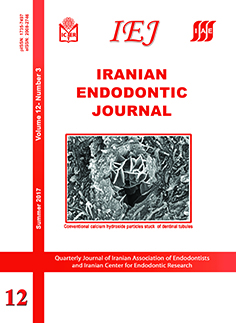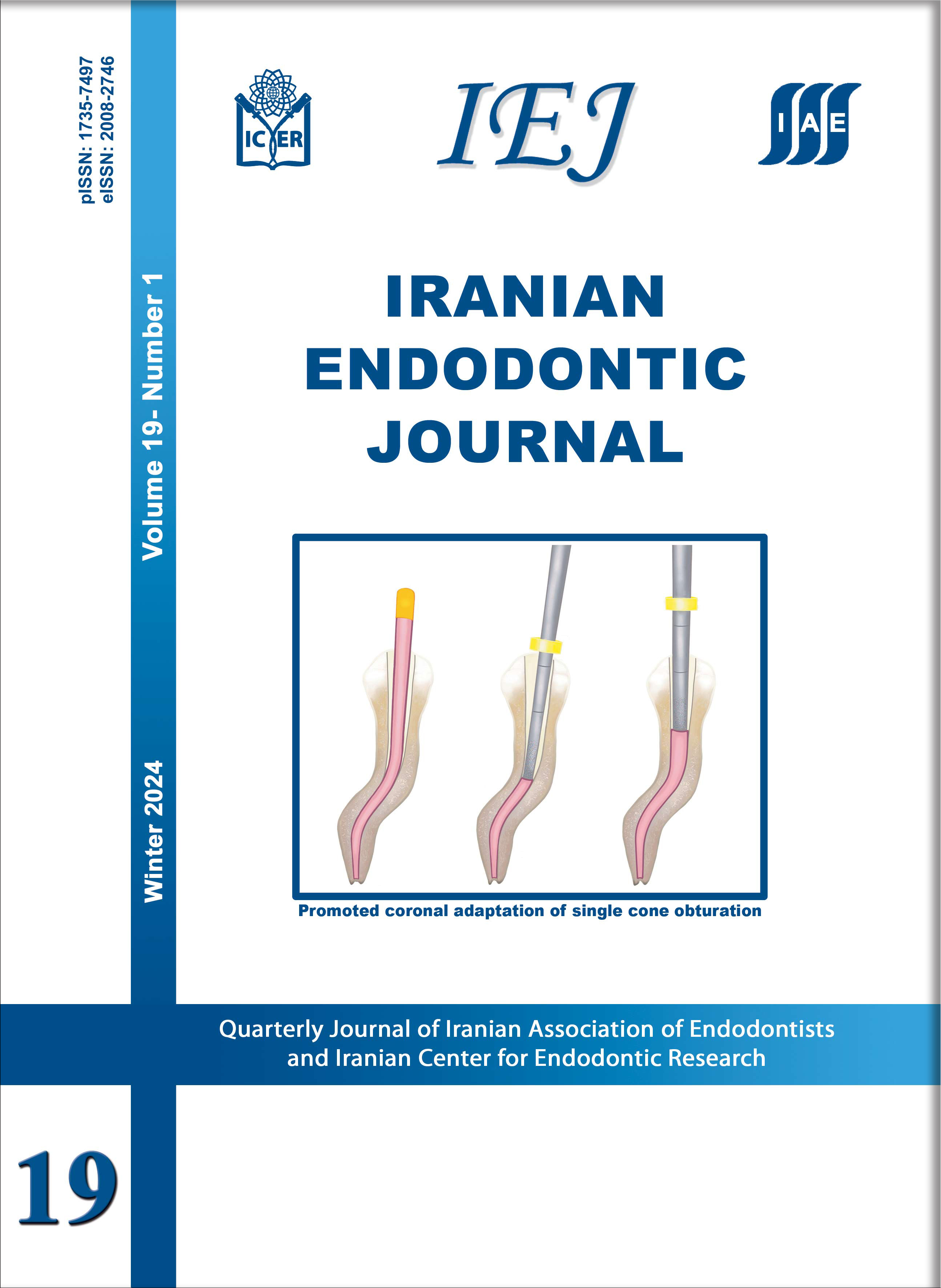Root Morphology and Canal Configuration of First and Second Maxillary Molars in a Selected Iranian Population: A Cone-Beam Computed Tomography Evaluation
Iranian Endodontic Journal,
Vol. 12 No. 3 (2017),
2 July 2017
,
Page 288-292
https://doi.org/10.22037/iej.v12i3.13708
Abstract
Introduction: The aim of this investigation was to evaluate root canal morphology of maxillary first and second molars and also to assess the prevalence and morphology of the second mesiobuccal canal (MB2) in these teeth, using cone-beam computed tomography (CBCT). Methods and Materials: In this cross-sectional study, the total of 470 CBCT images from the archive of Radiology Department of Isfahan University of Medical Sciences (IUMS), Iran, was evaluated and 295 images were selected. The number of roots, and canal configuration were determined based on Vertucci’s classification system. The data was analyzed using SPSS 20, and P-values less than 0.05 were considered significant. Results: A total of 295 images from 295 patients (165 females and 130 males), including 389 maxillary first (197 right and 192 left) and 460 maxillary second (235 right and 225 left) molars were evaluated. The prevalence of MB2 canals were 70.2% and 43.4% in the maxillary first and second molars, respectively. The most common type of Vertucci’s classification was type II (53.1%), followed by type I. Conclusion: The second mesiobuccal canal was present in almost two thirds of first and less than half of second molars. The morphology and canal configuration of a maxillary molar can almost predict the morphology of contralateral molar. However, it does not relate to the ipsilateral molar.
Keywords: Cone-Beam Computed Tomography; Maxillary Molar; Mesiobuccal Canal; Root Canal Configuration
How to Cite
- Abstract Viewed: 536 times
- PDF Downloaded: 615 times




